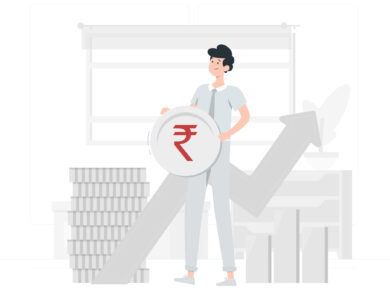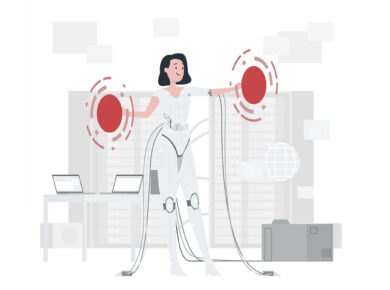McDonalds, KFC, Dominos and PizzaHut are now an inseparable part of our life. This generation cannot even think of living a life, completely detached from the pleasure of taste offered by these foreign food giants. Sadly, our taste buds remain totally enslaved. Right to say, it is less likely that we find a way out in the future – even at least try to find the way in the coming months or years. In fact, none love to live a life away from the tasty happiness introduced by these food superpowers.A couple of generations before, the things were not the same. Then, none, in their wildest dreams, anticipated that their food habits would experience a radical transformation in the future and the trend of community eating would be the real game changer.
If there is something that cannot be changed, it is the character of change. Whether we forecast it or not, it would happen at the right time. He, who can foresee it, is the man of true brilliance. To describe it clearly, it can be said that he is the one with the impressive advantage of vision.At present, restaurant is an extremely popular business. Eating from restaurants, which was once a luxury, is now a part of our normal life – just as common as running to tea shops for quick refreshment.Not only in India, but also in almost all the developing countries, especially those in the Asian and Middle East region, the same trend is witnessed. Thanks to the advent of Liberalisation and the emergence of Middle Class – Middle Income Population.
High disposal income, increased women workforce, aggressive urbanisation and growing affection towards the western way of life are the actual game changers when it comes to the matter of the aggressive expansion of western food chains in the third world. In India, like other developing countries, the liberalisation development of early 1990s was the true turning point. It revamped the entire economic framework of the country, and offered enough space for the birth of the modern restaurant revolution. The middle-income population, which was the by-product of the restructured economy, was the catalyst, which played the pivotal role in this remarkable revolution.
By the year 2001, the total number of restaurants in the country reached at least 22 lakhs. In the year 2010, the industry was successfully positioned in the top layer of the business sector, with an impressive market share of Rs, 43,000 crores. Though during the Covid-19 pandemic the industry witnessed a small setback owing to the sudden fall of demand caused due to the resulted economic paralysis, it has almost recovered from the crisis and has regained the comfortable growth rate of 15 per cent, at which the industry has been progressing till the advent of the disastrous pandemic and the related constrains – both economic and social. Undisputedly, at present, it is one of the most promising sectors in the country.
What comes with growth naturally is responsibility. It’s inevitable at this stage for the restaurant industry to explore technology deeply, in order to ensure their growth plan comply with their customers’ expectation. Sadly, not many restaurants in the country utilise the possibility of technology to the right extend, at this juncture.
Billing, accounts, inventory and analysis are the major sectors to which technology can be applied immediately to gain a clearly visible difference. And, from the point, it can be expanded further to AI-powered suggestions and Virtual Reality and Augmented Reality-powered experiences.
Some excellent restaurant industry software platforms are already available in the market. It is better to begin from these promising platforms. To get a right beginning is the best advantage. Definity, these platforms can provide a fresh impetus to the restaurant industry. If not, at least they can act as a right inspiration.Practicing the pen and paper method unquestionably is the first issue to which the restaurant industry needs to find an immediate solution. In this digital world, there is no point in practicing this old system. Sadly, a good number of our toplines restaurants still remain trapped in the system. It can only fuel the evil of unprofessionalism and can easily lead them to the pit of disaster.
Digitalisation is inevitable. Enormous attention needs to be given to digitalise the entire framework of restaurant management from billing and accounting to inventory. The digital inventory management system has rewritten the destiny of the entire restaurant industry. Zero wastage of resources, optimal usage of resources, real time date sharing, proper communication system act as the prime characteristics of the system.Suppose you run a chain of restaurants, which passionately follows the, traditional, pen and paper method. Following the traditional method instead of the digital method is like unnecessary putting additional effort. Definitely, looking from a growth-focused perspective, the additional effort that is put is a waste of resource. To reach the topmost peak of success, the key factor is how does one manage his/her resource.
In this scenario, if we replace the pen and paper system with the modern, digital method, we can boost the performance of the restaurant chain, as the action is capable to eliminate a lot of difficulties, such as miscommunication, improper communication, misinformation, which can adversely affect the performance of the business in terms of growth and stability.The question that why should we bother about digitalisation when our system is comfortable with the existing structure and is performing well, is definitely relevant. Rapidly growing competition and increasing popularity of digitalisation – especially in the restaurant industry – are the two points that can easily answer the above question if right thoughts are applied.
In the absence of digitalisation, even though you serve excellent food products, have a good reputation in the industry and enjoy a strong customer loyalty base, you may fail to survive in the highly competitive industry and may struggle to address the challenges posed because of miscommunication, lack of proper analysis and of similar other elements – which other restaurant chains can easily handle because of the advantage showered to them by digitalisation.Digitalising the restaurant industry, though is interesting to hear, is a vague and in fact is a purely general expression. To understand the point better, an effort is required to move deep. What comes first to our mind when this point is discussed is billing, kitchen management, human resource management and inventory management. Are these the only elements? To limit the possibility inside the four walls of the aforesaid elements is foolishness. The actual possibility of the concept is tremendous.
In the Covid-19 period, a sharp increase in the area of online food booking was experienced. The trend still remains unchanged, as if the present generation does not love to give away some of its Covid-19 tech habits and does feel reluctance to certain comforts.Certainly, the development reflects the attitude of the generation and their liking towards digitalisation – particularly, the simplification and comfort that it can promise.Zomato, Swiggy and Ola Foods are the three major names that cannot be ignored when we discuss the success of the online food delivery system. They are the ones which leads the food delivery revolution emerged in the country recently – rightly speaking, in the sidelines of our fight against the pandemic.
Analytics is the advanced area of digitalisation. It is where the future of the entire concept actually rests. For anything and everything, this possibility can be employed. Among its popular applications, predicting customer preferences, identifying peak hours and off peak hours, understanding product performance, and evaluating workforce performance are the major ones.AI-powered menu suggestion, quality analysis and preference identification hints that what we have discovered so far is just the tip of the iceberg. That day is not too far when perfection, accuracy, transparency and professionalism dominate every area of industry, providing it with the much-needed modernisation. Imagine how far our restaurant experience has improved over the years. Few years before, making restaurant payments through mobile applications was nothing more than an eccentric dream.
Likewise, booking table spaces through applications and making orders through menu scanners are seen with curious eyes. The concepts of Virtual Reality Restaurant and Augmented Reality Restaurant Experience are considered as something beyond eccentric.When we dream holding the possibility of digitalisation in one hand and the hunger for growth, progress and ambition in the other, the word ‘eccentric’ is simply nothing but pointless.High Time To Provide A Long Digital Breadth To The Evergreen Industry.







